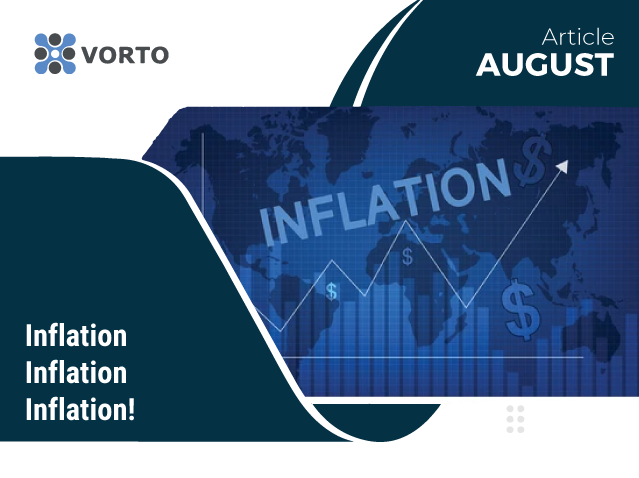Inflation, Inflation, Inflation…
Inflation is currently a big topic around the world and is fast becoming one of the biggest issues of our times. According to research published by GlobalData, global inflation is set to reach 7.5% by the end of 2022. Vorto’s Bobby Ward explores the increase in inflation and the potential drivers behind its rise and what global economies are doing in response.
What is driving the increase in inflation rates? New publication ‘the Conversation’ shared an article detailing that there have been some arguments that US policies in response to the management of the Covid19 crisis could have brought on this predicament. In a frantic effort to save the economy in America from crumbling, the Federal Reserve began to print money at an unprecedented rate, USA Money confirmed. The goal was to enable markets to keep functioning through a bigger money supply and lower interest rates. Without this, the economy was set to crash. However, with this strategy comes the risk of increasing inflation rates, which could be a direct cause of the situation that we are experiencing today in 2022.
However, there are some economists who are doubting this reasoning because inflation is rising everywhere and across ‘38 largely wealthy countries that belong to the Organization for Economic Cooperation and Development through May 2022’.In Europe, inflation reached 5.1% at the start of 2022, an effect that has not been witnessed since 1997. Since, Germany and the UK reached 7.5% and 8.2% respectively in a twelve month period that ended in June 2022. In Spain, inflation has risen to 10%.
Another driver behind the accelerated increase of inflation is supply chain disruption, the energy crisis and increased costs of food and fuel. The impact of the Russia-Ukraine war has propelled a cost-of-living crisis due to the global disruption of the energy supply chain. According to WeForum, prices are reaching all-time highs across the US, Europe and Latin America. Back in June, consumer prices in the US increased by 9.1% within 12 months which is the highest record within four decades. Another sobering headline published at the end of August 2022 was that the UK energy regulator is increasing the price cap by 80% so the typical household gas and electricity bill will increase to £3,549 a year from October. There is no doubt that we are entering a cost-of-living crisis. It is for this reason that banking institutions are releasing their forthcoming projections.
Many global economies are raising interest rates in order to cap inflation.It was reported by GlobalData that the ‘US Federal reserve hiked its policy rate three times in the period January 2022 to July 2022’. There are further hikes expected to occur in the latter part of the year. Simultaneously, Reuters published that The Bank of England is also likely to be increasing interests to combat inflation.
In order to overcome inflation, businesses and governments need to address supply chains issues and arguably, readdress the faults in supply chains that rely on globalization.At the same time, companies would need to be able to produce more goods or services within a shorter time frame. This strategy would cust costs per unit and therefore raise the supply and thus put downward pressure on prices. However, in order to achieve this, governments would need to be able to incentivise investment and develop strategies for implementation.
It is a long way out from this current crisis, but like all crises, this one could signal the start of a new era for supply chains, production methods and the way countries operate as a whole when it comes to energy, food and produce.
